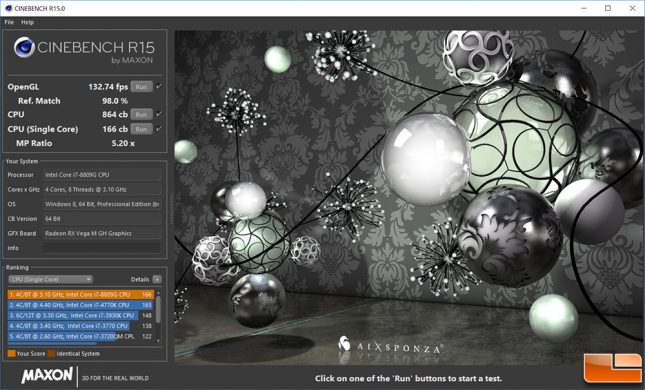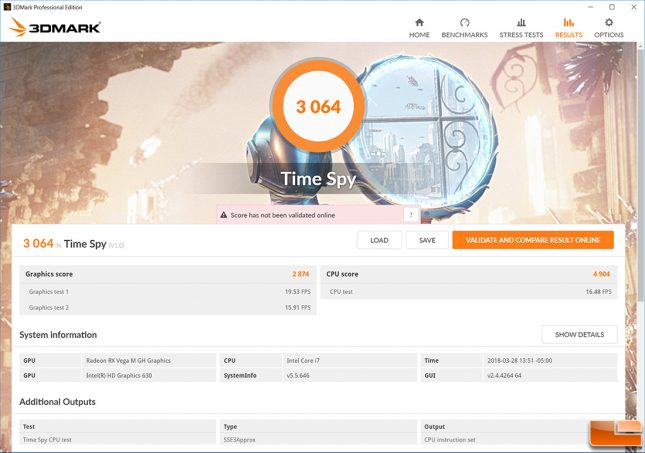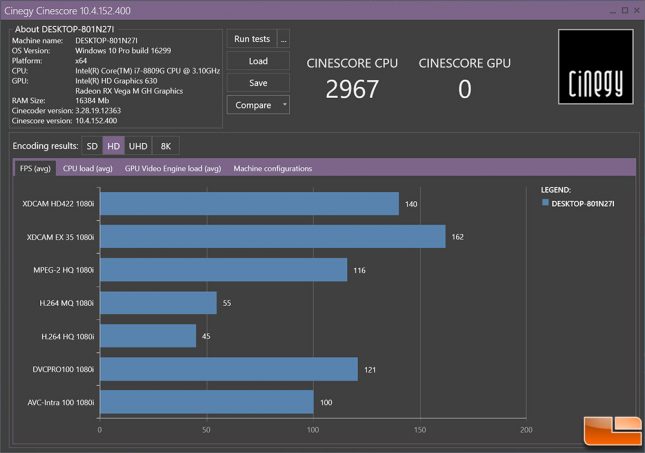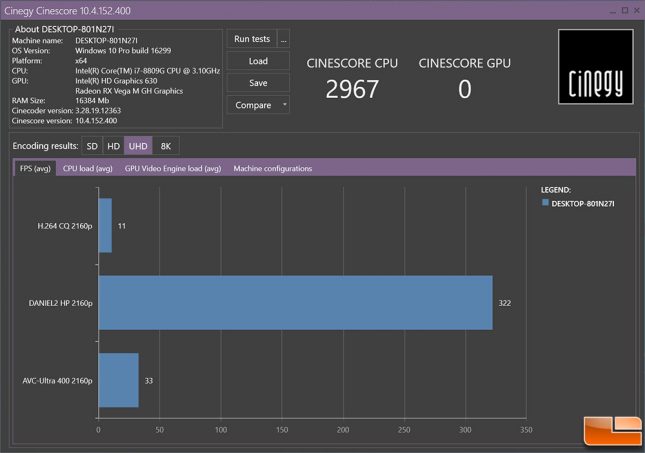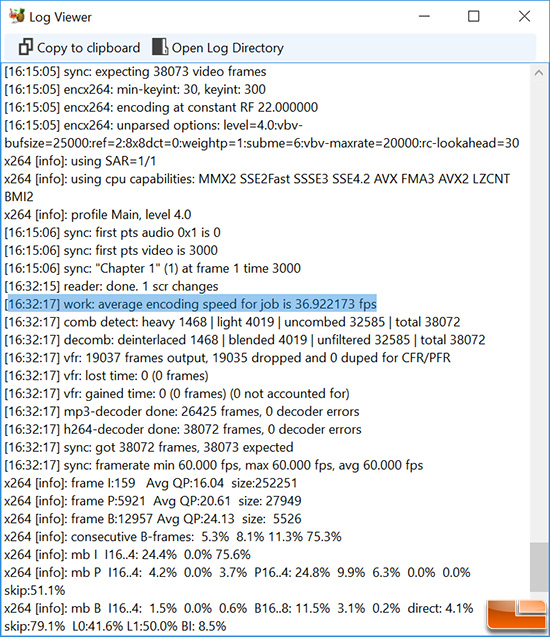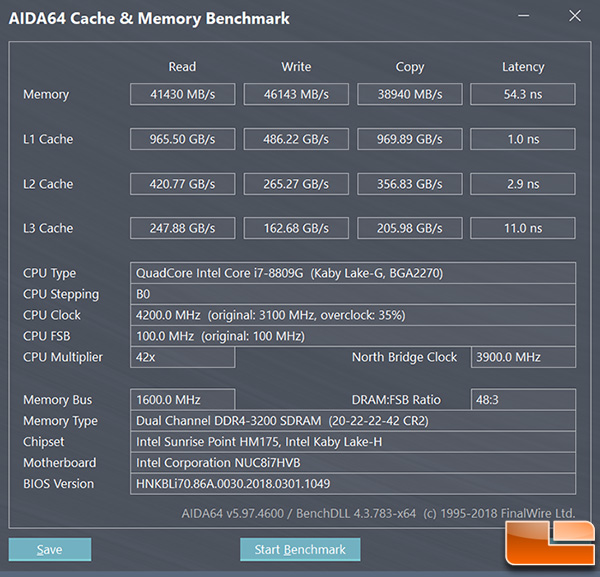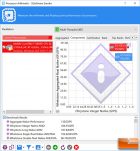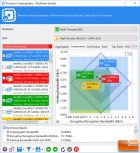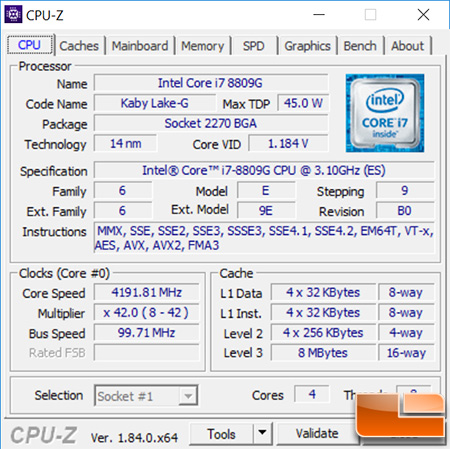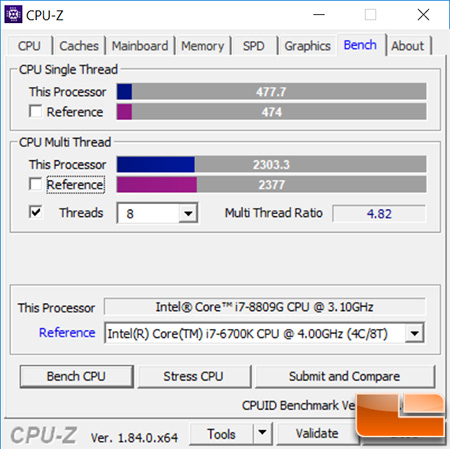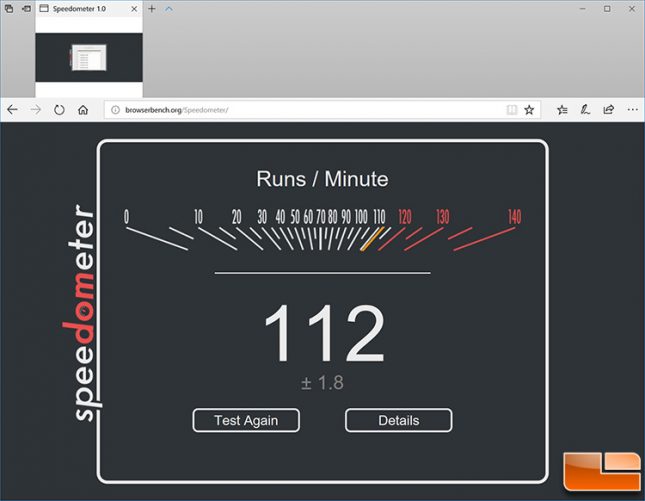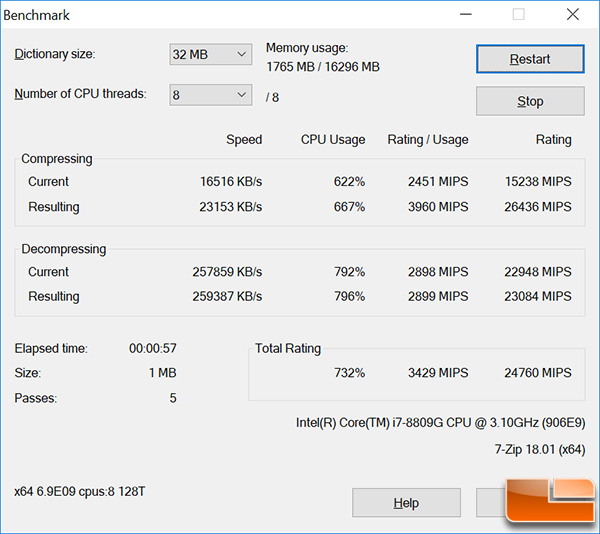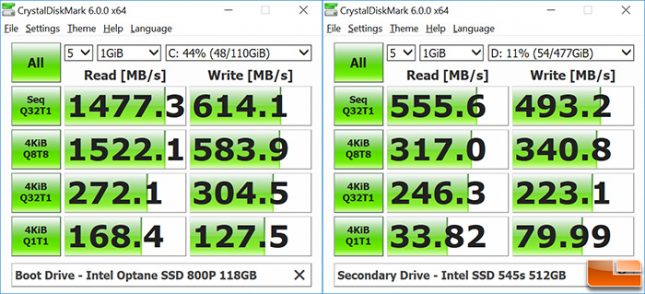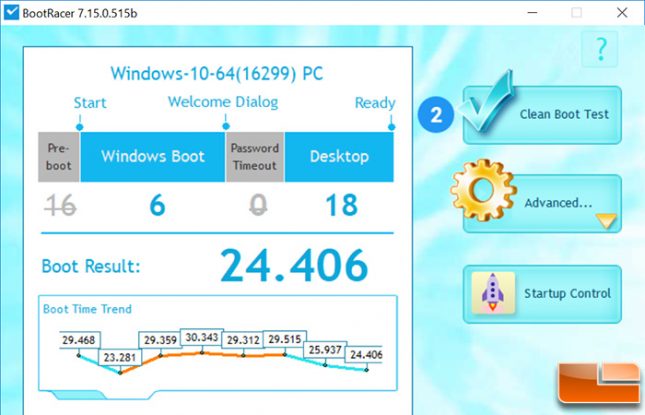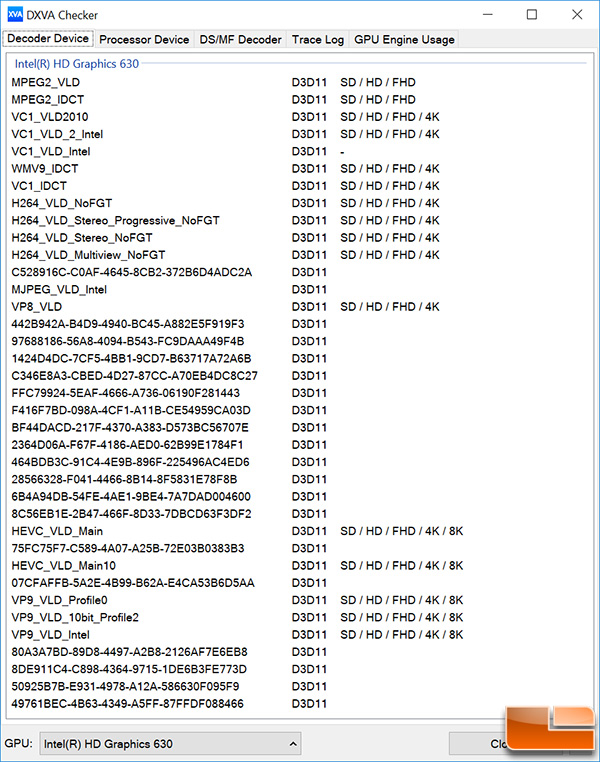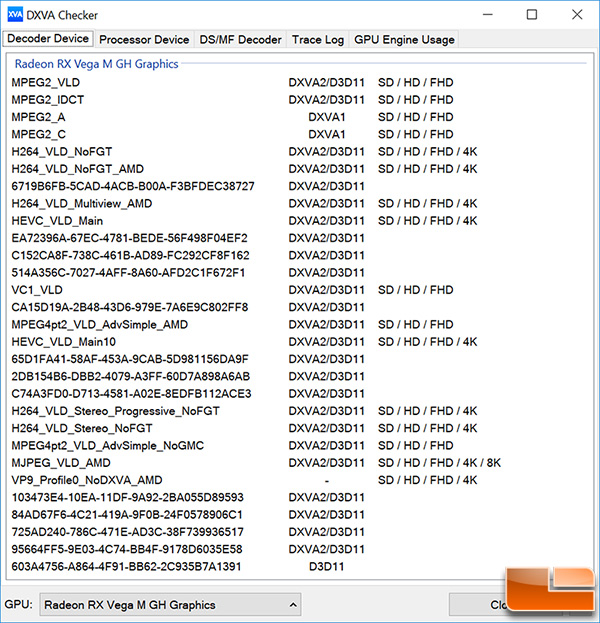Intel Hades Canyon NUC8i7HVK NUC Review – Radeon RX Vega M GPU
Hades Canyon NUC8i7HVK General Performance Testing
The Intel Hades Canyon NUC with the Intel Core i7-8809G processor scored 132.74 FPS on the OpenGL benchmark, 864 points on the multi-core CPU test and 166 points on the single-core CPU test.
In 3DMark we scored 3,064 points in Time Spy, the DX12 benchmark for Windows 10 gaming PCs, specifically 19.53 FPS in Graphics Test 1 and 15.91 FPS in Graphics Test 2.
On the Cinegy Cinescore 10.4 video encoding benchmark we found the NUC with the Intel Core i7-8809G quad-core processor was capable of roughly 100 FPS at 94% CPU load on AVC-Intra 100 1080i and 33 FPS on AVC-Ultra 400 2160P at 95% CPU load.
We ran Handbrake 1.0.7 and used the Big Buck Bunny 4K 60 FPS movie as our test file. We were able to complete the transcode using the Fast1080P preset with an average speed of 36.92 FPS.
AIDA64 v5.97 showed that the dual channel 3200MHz DDR4 memory had 20-22-22 2T timings and was capable of 41,430 MB/s read and 46,143 MB/s write speeds with a latency of 54.3 ns. The copy test bandwidth was found to be 38,940 MB/s.
SiSoftware Sandra 2017 showed an aggregate memory bandwidth of 30.52 GB/s in multi-threaded mode and 23.46 GB/s in single-threaded mode. We also ran the processor arithmetic benchmark where we got 132 GOPS and the cryptography test where we got a bandwidth score of 9.34 GB/s.
The benchmark included in CPU-Z showed we had a single thread performance score of 477.7 and a multi-thread performance score of 2303.3, which is basically tied with the Intel Core i7-6700K CPU reference score!
We ran the Speedometer 1.0 browser benchmark on Microsoft Edge and found an overall score of 112 runs per minute.
The 7-Zip 18.01 benchmark test showed that the Intel Core i7-8809G Processor in this system had a total rating of 24,760 MIPS.
A quick run of CrystalDiskMark v6.0.0 showed the performance of the Intel Optane SSD 800P 118GB drive was solid at 1477 MB/s read and 614 MB/s write. The secondary storage drive was an Intel SSD 545s 512GB SATA drive and it topped out at 556 MB/s read and 493 MB/s write. It should be noted that both of these drives were tested with data on them, but the scores were solid as you can see from the images above.
Boot times on Hades Canyon were observed being between 23-29 seconds.
Video Playback
Since many Intel NUC Kits will be used in the living room we thought we’d take a second and look at a number of video types on the device to see how it would perform as a HTPC as many people might be looking into buying this and running Kodi. We took a quick look at DXVA checker and found that the Intel HD Graphics 630 Graphics and Radeon RX Vega M both support a wide range of hardware acceleration. The one thing we noticed is that Radeon RX Vega M can not decode VP9, so that means no YouTube HDR support. That is rather shocking for AMD’s flagship mobile GPU! We contacted Intel to check about UGD BluRay support and found that Hades Canyon does not support that either. This is due to the fact that all the graphics outputs are routed from the Radeon discrete GPU. The Hades Canyon Protected Audio Video Path (PAVP) is currently supported only through integrated graphics, and any platform solely utilizing discrete graphics will not support PAVP and, therefore, UHD BluRay playback.
Let’s take a look at alt coin mining performance on the Intel Hades Canyon NUC.

